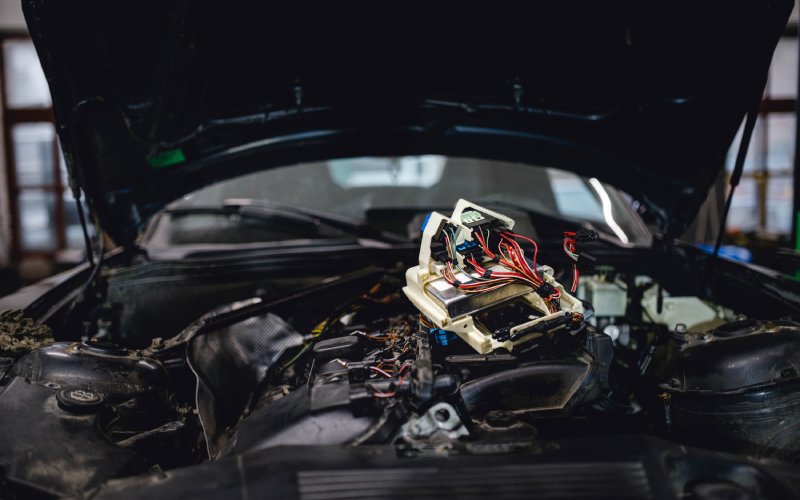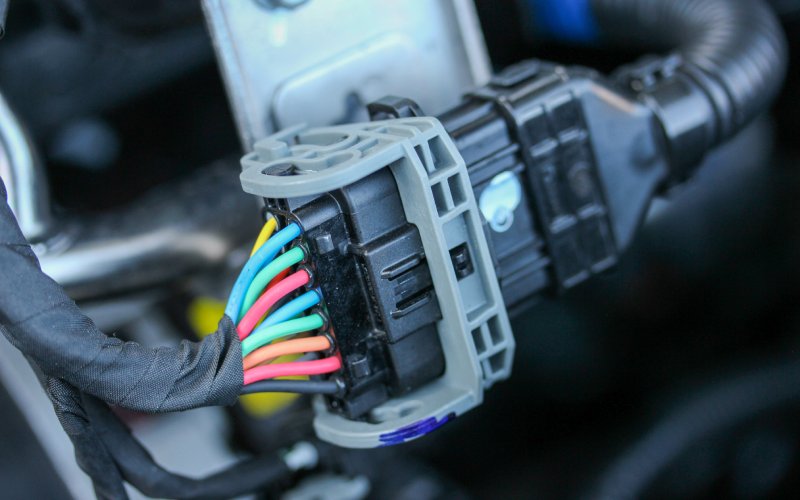Selecting Heat-Resistant Wiring in Vehicle Hot Spots

The challenges of creating and operating modern vehicles extend beyond speed, efficiency, and even comfort. Heat management plays a critical role in ensuring the safety and reliability of a vehicle’s electrical systems. One of the most important components in this area is wiring that can withstand extreme temperatures. Selecting heat-resistant wiring in vehicle hot spots requires careful consideration.
This guide will walk you through the fundamental aspects to consider and provide practical advice on selecting wiring materials that withstand the elements. Whether you are an engineer, technician, or automotive enthusiast, you’ll get a clear understanding of how to make informed choices for wiring solutions in high-temperature zones under the hood.
The Importance of Heat-Resistant Wiring in Vehicles
Vehicles are more advanced than ever, which means their electrical systems are complex and handle high power loads. With high operational demands, certain parts of a vehicle’s engine bay can generate extremely high levels of heat. The engine, exhaust manifold, and turbocharger create what are known as “hot spots.”
When wiring in these areas cannot handle heat exposure, the results can range from poor performance to complete system failures. This increases the likelihood of vehicle malfunctions or fire hazards. Selecting heat-resistant wiring in hot spots is essential to ensure your vehicle operates reliably.
What Factors Determine Heat Resistance?
When selecting heat-resistant wiring, consider temperature rating, the insulation materials, and the performance of the core wire. These aspects help you choose wiring that meets your operational requirements and long-term reliability goals.
Temperature Rating
The temperature rating refers to the maximum level of heat a wire can handle before malfunctioning or degrading. It is essential to select wires with ratings suitable for the environment in which they will be installed. For example, spaces near the exhaust manifold or turbocharger may require wires rated for temperatures exceeding 200 degrees Celsius. Beyond their listed temperature limits, wires can lose conductivity, suffer insulation breakdown, or melt.
Insulation Material
Heat-resistant wires feature high-quality insulation materials that act as a shield against heat. Common materials include silicone, cross-linked polyethylene (XLPE), and fluoropolymers like PTFE (Teflon®). Automakers carefully choose these materials for their ability to retain flexibility, avoid cracking, and insulate effectively, even in extreme temperatures. Engineers carefully compare these materials to get durable performance in demanding automotive environments.
Wire Core
The material of the wire core also matters in terms of heat resistance. Copper is widely used due to its excellent conductivity properties. In specific cases where resistance to heat is a concern, tinned or silver-plated copper cores are ideal. These coatings offer better protection against corrosion or oxidation that often occurs at high temperatures when wires are exposed to fluctuating environments.

Common Applications for Heat-Resistant Wiring
To demonstrate the importance of heat-resistant wiring, it’s helpful to highlight some common applications in a vehicle. Engine bays, braking systems, and advanced driver-assistance systems (ADAS) are just a few examples where thermal management and electrical performance are closely intertwined.
Engine Bay
The engine bay is a particularly high-stress environment due to factors such as radiant heat from the engine block and exhaust components. Wires in the engine bay need to withstand a constant high temperature and occasional heat spikes. Routing wires through insulated conduits, combined with the use of high-temperature-rated cables, is the ideal solution.
Brake Systems
Modern braking systems incorporate various electric components, including sensors for anti-lock braking systems (ABS). These systems experience heat from friction combined with environmental stressors. Heat-resistant wiring allows these systems to continue functioning reliably under harsh conditions.
Electrical Connectors
Connectors are other crucial elements that play into this discussion. For instance, pairing heat-resistant wiring with durable 5-pin connectors creates reliable links between circuits and protects the integrity of the system.
Selecting Heat-Resistant Wires Step-by-Step
1. Understand the Environment
Location matters immensely in wiring choices. Wiring routed near exhaust systems, in areas exposed to direct engine heat, or within confined spaces where airflow is reduced requires extra attention to temperature tolerance. Mapping and identifying heat zones are the first steps to matching the wiring appropriately.
2. Match Specifications to Requirements
Always cross-reference the requirements of your application with the specifications of the wiring material. This is particularly important when dealing with equipment or sections of the vehicle that are part of critical operations, such as braking or engine management systems.
3. Insulate and Protect
Adding a layer of protection through sleeving or conduit is an effective way to enhance the durability of wiring sets. While heat exposure can affect the primary insulation material, additional insulation or shielding provides strength.
4. Seek Expert Guidance or Refer to Standards
Modern vehicles rely heavily on adherence to industry standards. Standards from the International Organization for Standardization (ISO) and the Society of Automotive Engineers (SAE) provide specifications for various components, including wiring materials. Meeting these industry standards can help with long-term reliability and system compatibility.

Future Trends in Heat-Resistant Automotive Wiring
Today’s advancements in automotive technologies are paving the way for more sophisticated wiring solutions. Development trends may include the use of more durable, lightweight, and non-metallic materials with enhanced thermal protection and electrical efficiency. Innovations related to braided shielding materials and heat-reflective coatings are emerging. These technologies will undoubtedly shape the future of automotive wiring.
Final Thoughts on Wiring for Vehicle Hot Spots
Selecting heat-resistant wiring in vehicle hot spots is not a decision to take lightly. By choosing wires with the right temperature ratings, insulation, and durability, you are investing in the enhanced safety, reliability, and efficiency of your automotive system. Material selection not only ensures peak performance but also mitigates safety risks associated with overheating electrical components.
We can’t overstate the importance of investing in high-temperature-tolerant wiring. Make sure to consult an automotive expert or a trusted mechanic if you are planning to make significant changes to wiring setups in your vehicle.
When it comes to electrical systems in a vehicle, every component is part of a larger system. Align everything, from heat-resistant wiring to durable connectors, to create an efficient and safe system capable of enduring real-world conditions.

You must login to post comments.